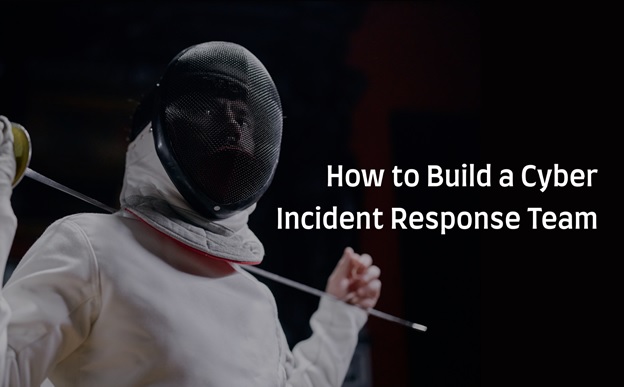How to Build a Cyber Incident Response Team
Many managers of various business projects consider cyber defense primarily as a kind of high-tech innovation. Though it is a set of systems integrated into all business processes and timely counteraction of the incident response team. As a result, they all get the wrong idea of how to build a cybersecurity program properly. The implications are dire: about 80 percent of cybersecurity executives surveyed say their companies are not ready to face new cyberattacks that are becoming more sophisticated every year. To avoid a crisis, you must effectively manage a cyber-incident at all three stages of its development: before, during, and after the incident. Effectively managing cyber-related incidents requires a highly coordinated response from multiple organizational functions and specialist expertise.

So, it can be:
- In-house professionals supporting the security center (SOC);
- Specialists who perform IT security functions and work in medium and small companies;
- A team of true professionals to arrange an airbag for you on demand.
It doesn’t matter how you recruited specialists for the response team. These must be qualified specialists! They should know exactly the algorithm for preventing cyber incidents, guided by a clear plan. In the event of a dangerous intrusion, your employees must know the basics of cybersecurity and be able to restore systems quickly. In some cases, a cyber-incident is inevitable, so it is vital to mobilize, take effective actions and inform stakeholders about the attack.
Table of Contents
Cyber Incident Response Plan: The Notion & Essence
The plan is the starting point in the Incident Response process. A detailed outline for Information Security Incident Response looks like this:
- Definition of an information security incident;
- Classification of information security incidents according to the degree of risk;
- According to the classification, the development of the clearest and understandable incident response plan;
- Establish a Response Team and familiarize it with the Response Plan;
- Constant evaluation of the effectiveness of this scheme and its improvement;
- Record keeping of all investigations carried out.
Allocate funds for timely updates, implement modernized cybersecurity measures. If you take these measures regularly, then finally, you will minimize the time for containing attacks, as well as for recovering systems after an incident. Based on the SANS, the following stages of responding to cyber incidents are distinguished:
- Advance training of security personnel to mitigate any form of incidents. Here it is vital not to forget about the need for constant training, the availability of equipment, as well as practicing practical skills;
- Identification of incidents and their clear identification. It is also significant to assess the severity of the consequences of each incident;
- Isolation of systems that have been compromised. It is essential to do everything possible to repair the damage;
- Identification of the cause of the threat;
- Restoring systems and eliminating the possibility of their repeated damage;
- Conducting a thorough analysis of localized incidents, as well as timely modernization of an existing plan.
As cyber threats expand rapidly, your company’s WISP, data policy, employee training, threat defense hardware and software, and insurance must also evolve exponentially.
Building Cyber Incident Response Team: The Main Stages

Investigation of information security incidents and response to them is a complex and complex process that requires the participation of employees of many divisions of the company: personnel of the HR department, lawyers, technical experts of the IT system, external information security consultants, business managers, end users of the information system, employees of technical services support, security personnel, etc.
So, there should be:
- A leader who is responsible for coordinating the actions of all team members;
- Public relations specialist who has relevant education;
- An analyst leader who collects and analyzes technical evidence. This specialist will identify the root cause of the attack and guide other analysts and IT components to restore all systems;
- Specialists of the research unit who collect information about the threats and the context of the incident;
- Legal professionals will form the basis for considering potential criminal charges related to the incident.
Most companies create a Computer Security Incident Response Team (CSIRT). This commission should include experts and consultants in the legal and technical fields.
CSIRT Location as The Key to A Successful Incident Response
It’s important to stay alert 24 hours a day, 365 days a year! That is why the professionals who are involved in the CSIRT occupy these positions geographically to ensure maximum time zone coverage. If team members are not available, reservations must be made. It is possible to benefit from outsourcing incident response functions outside office hours or on holidays, but this usually requires staff to ensure response times.
What Is the Essence of Automation in Cybersecurity Incident Response?

It is very regrettable, but one cannot but admit the fact of a shortage of qualified specialists who would take their place in the CSIRT fairly.
Accordingly, automation takes first place in the localization and elimination of cyber incidents. It is precisely the debugged automation that will become the basis for the work of CSIRT specialists.
Today, scripts or codeless workflows are heavily used that automatically perform many repetitive tasks after startup. However, the script cannot always replace the work of an experienced analyst.
Each incident is individual and requires an individual approach and appropriate solutions. It can be provided by the human mind only. The investigation phase is designed to determine who, what, when, where, how, and why/were involved in the incident.
The investigation includes checking and collecting evidence from servers, network devices, and traditional non-technical activities. It can be divided into two stages: data collection and forensic analysis. The information gathered through the incident response and training programs will help improve the entire plan. You will also be able to introduce new elements of strategic management of the cybersecurity department. One should agree that an automated script will fail to do this.
To Conclude
Since in the modern world, people depend on computerized systems, cybersecurity deserves great attention. If, for example, personal or secret data stored on hard drives can be accessed by hackers, their storage cannot be considered safe. And to keep them safe, you need to take comprehensive protection measures, which is what cybersecurity experts do. The creation of CSIRT must be given special attention, as you will be able to implement the tasks set:
- Prevent uncoordinated actions and restore the company’s performance as soon as possible about an incident;
- Ensure the safety and integrity of the evidence of the incident. Create conditions for initiating civil or criminal proceedings against the attacker; Protect private rights established by law;
- Minimize disruption and damage to IT system data. Minimize the consequences of compromising the confidentiality, integrity, and availability of the IT system;
- Protect the company’s reputation and resources.
Whether they are third-party experts or staff members, it’s up to you to decide. You must carefully analyze the needs of your company! Also, assess the degree of risk and severity of the consequences in the event of a cyber-incident.

